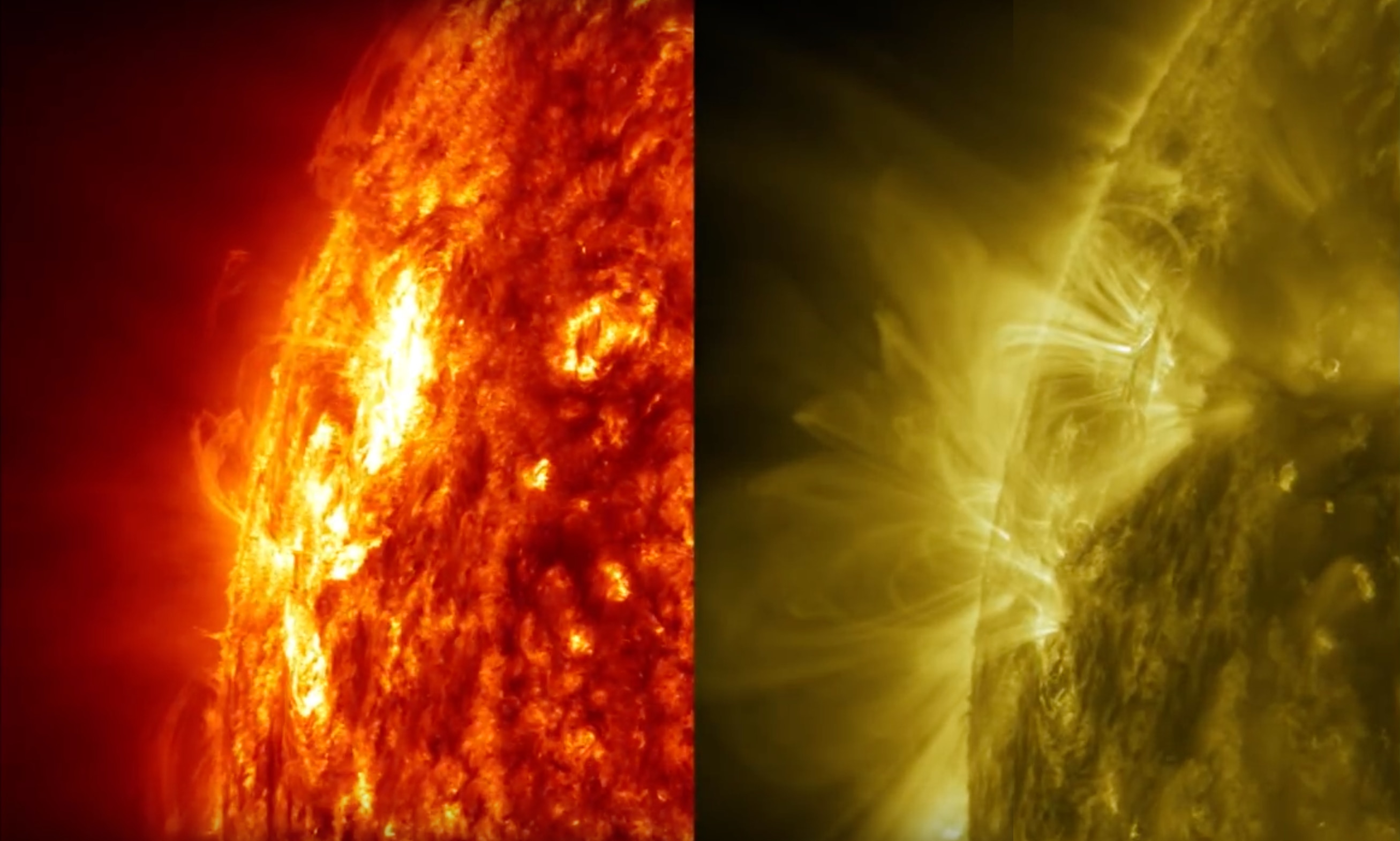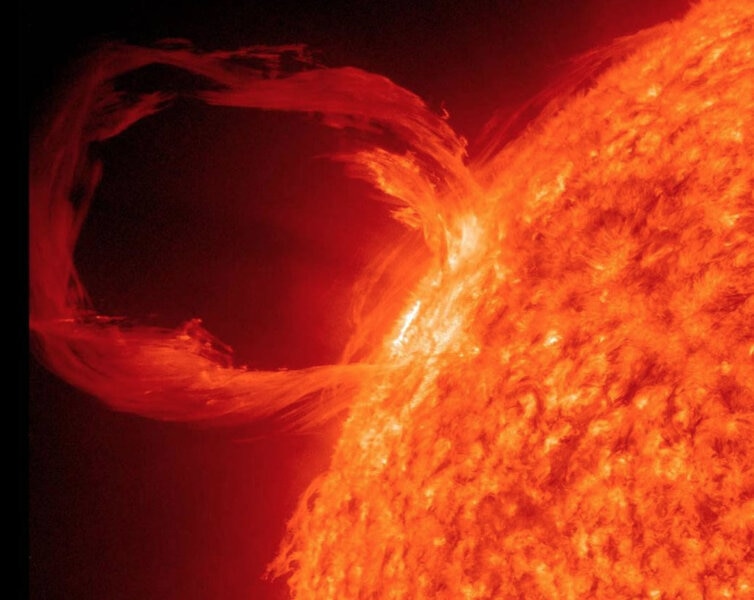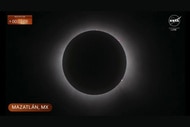Create a free profile to get unlimited access to exclusive videos, sweepstakes, and more!
The Sun just exploded in a totally new way we never heard of before

When NASA has an OMG reaction to a phenomenon in space, you know it’s going to be something even science fiction hasn’t thought of yet.
NASA’s Solar Dynamics Observatory (SDO) has observed another type of tantrum that the Sun can throw besides solar flares and coronal mass ejections, an explosive cosmic event called "forced magnetic reconnection." It's basically what happens when plasma and twisted magnetic fields collide.
Think of it this way: Solar plasma is made of hot, angry charged particles. The Sun's magnetic fields are really unstable because its surface is always moving around at different speeds. This is why the magnetic field lines inevitably get caught up in each other and end up in massive snarls. The more tangled they get, the more prone they are to breaking, and enough movement on the surface will make them snap. If that kind of trigger aggravates them enough, just imagine what happens when an immense, fiery plasma explosion throws them into chaos.
This reaction has been theorized for 15 years but never proven until now. Finding out its existence is a breakthrough that could help us understand more about our star’s atmosphere and the temperamental forces behind space weather.
“This was the first observation of an external driver of magnetic reconnection,” said solar scientist Abhishek Srivastava of the Indian Institute of Technology (BHU), in Varanasi, India, according to a NASA report. “This could be very useful for understanding other systems. For example, Earth’s and planetary magnetospheres, other magnetized plasma sources, including experiments at laboratory scales where plasma is highly diffusive and very hard to control.”
A solar prominence (above) is a blinding loop of plasma that emerges from the Sun’s photosphere, or its visible surface, that is really a thick layer of gas. These can extend through its atmosphere, or corona (the glowing ring you see during a total solar eclipse), and hundreds of thousands of miles into space. Prominences are still something of a mystery. What we do know is that they tend to entangle themselves in the already bizarre structures of magnetic fields that originate in the Sun’s innards, and when one of these magnetic fields loses its stability, a prominence can erupt and vomit blazing hot plasma.
What happened in this case is the opposite of that. Magnetic fields on the Sun often snap and realign in a process called magnetic reconnection. Spontaneous reconnection causes enough explosive activity on its own, but scientists have never seen proof of forced reconnection — magnetic reconnection triggered by a nearby eruption. It happened when the prominence in question started falling back to the surface. Instead of an unruly magnetic field triggering the prominence to erupt, the prominence crashed into a mess of magnetic field lines that exploded when it got sucker-punched with plasma.
“Appropriate external forcing can bring the oppositely directed field lines into the temporarily created diffusion region first via the plasma inflows as seen in the observations,” said Srivastava and colleagues in a study recently published in The Astrophysical Journal. “The reconnection and related plasma outflows may occur thereafter at considerably larger rates.”
Forced reconnection has the potential to happen in more places than spontaneous reconnection can. Areas on the Sun need to meet extremely specific conditions, such as a thin sheet of plasma that is a weak conductor of electricity, for spontaneous reconnection to happen. So long as there is an eruption to trigger it, forced reconnection can happen in solar regions with even lower conductivity, and can reconnect the plasma and magnetic fields by squeezing them together in an X formation.
SDO was able to study this plasma by zeroing in on a wavelength of scorching light particles that ranged from 1.8 to 3.6 million degrees Fahrenheit. By watching and imaging plasma for over an hour, the floating observatory beamed back proof of forced reconnection in the Sun’s corona for the first time ever.
As the SDO continues to stare straight into the Sun, NASA’s Parker Solar Probe is expected to demystify even more about our solar system's resident fireball in 2020. Now that’s hot.
(via NASA)













